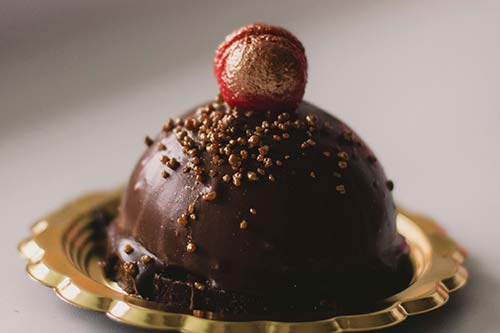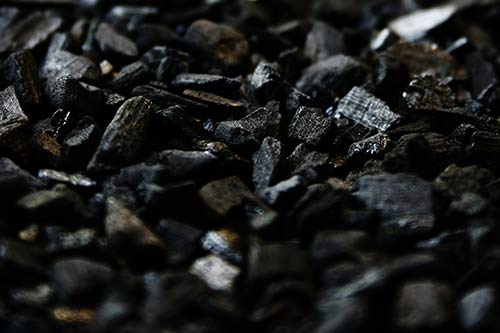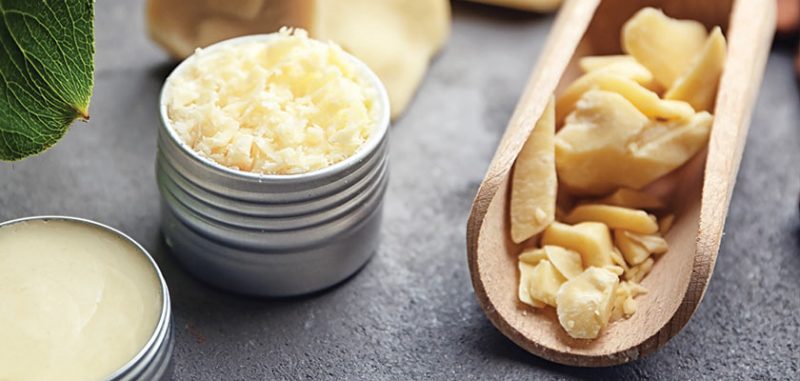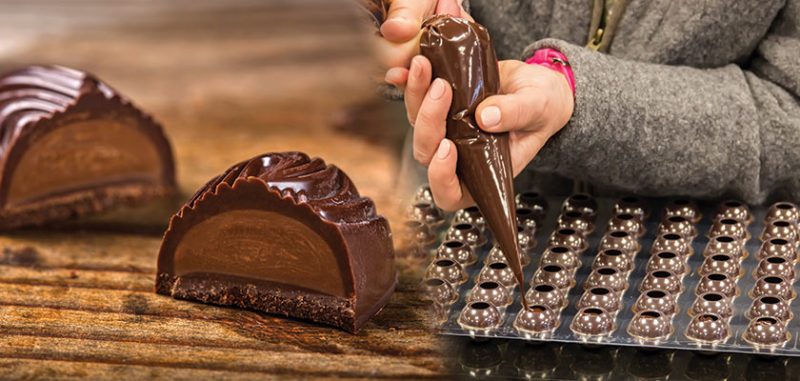Learn how to color chocolate correctly in this tutorial with professional chocolatier, Simon Knott, using chocolate-suitable food colors.
Adding color to your chocolate creations is a great way to add some life and personality to the overall look of your work. However, working with chocolate is a delicate craft, and if not treated right, chocolate has a tendency to seize, thereby ruining your beautiful batch of chocolate. If not done properly, adding food colors to chocolate can cause just this to happen.
In this article, Simon explains how to color chocolate correctly, so you can confidently add beautiful colors to your chocolate without fear of ruining your batch.
How to Color Chocolate Correctly
Article by Simon Knott, Professional Chocolatier
For chocolatiers and bakers, coloring foods has become something of an art in its own right, especially with the advancements in food science.
The range of colors and different applications now available have enabled artists to greatly extend the boundaries of presentation. Coloring chocolate has become a science and an art where chocolatiers can create endless visually exciting, and novel effects.
Altering the color of chocolate is mostly limited to white chocolate food coloring. This is because the color intensity of the cocoa solids in milk and dark chocolate makes it particularly opaque. Consequently, the large quantity of color required to change the tone will also detrimentally affect the chocolate’s flavor and texture.

How to Color Chocolate
General Steps for How to Dye Chocolate
Equipment
- Oil-based or powdered food coloring – more info in this article
- White chocolate – use the best quality you can afford with a high cocoa butter content
- Double boiler or microwave
- Spatulas for mixing chocolate during tempering
- Digital thermometer
- Small mixing bowls – one for each color you’re going to make
- Spoons – separate spoons for each mixing bowl
- Small measuring spoon – increments of a teaspoon to add color or use the dropper on a squeezy bottle
DO NOT USE WATER-BASED FOOD COLOR, OR THE CHOCOLATE WILL SEIZE
Instructions
#1: CLEAN
Ensure all your equipment is clean and completely dry. Any grease or moisture on the equipment can easily cause the chocolate to seize, making it useless.
#2: MELT & TEMPER CHOCOLATE
Melt the quantity of chocolate you need for your recipe according to the manufacturer’s recommendations, either in a microwave or in a double boiler. Temper the chocolate with seed chocolate using an accurate digital thermometer.
#3: ADD FOOD COLORING
Share the melted tempered chocolate between each of the small mixing bowls.
Add a very small quantity of oil-based or powdered color to one of the bowls and mix with a spoon. Use this as a test to roughly gauge how much more color you need to add. If you are close to the color tone you want but just want it a bit more intense, add a very small extra amount of color using a cocktail stick dipped in the color.
#4: STIR IN THE COLOR
Work as quickly as you can, but don’t panic. Stirring too fast will only introduce air bubbles into the chocolate. The small quantity of chocolate in the mixing bowl will soon lose its heat, causing it to set.
If it does set before you are finished, re-melt the colored chocolate and re-temper it in the same way as before.
How to Make Red Chocolate
Making red chocolate can sometimes be problematic when the finished result is pink rather than red. Try adding more color, a small amount at a time, and mixing in between.
The pigment used in red chocolate varies by manufacturer, but Red Dye 40, a synthetic product, has been approved by the US FDA and in Europe.
For recommendations on food coloring brands, including both natural and synthetic colors, see my article on the best types and brands of food coloring for chocolate.

How to Make Gold Chocolate (Golden Chocolate)
There is no easy way to mix gold food coloring products into melted white chocolate successfully. Instead, it’s much easier to apply the coloring to the exterior surface of the chocolate. There are several available options:
Gold lustre powder
A very fine powder that can be applied to chocolate directly using a soft brush, or it can be mixed with alcohol and applied with a brush, like paint. It’s made from translucent powders that combine titanium dioxide, the mineral mica, and metal oxides. Together, they create a very smooth surface that reflects light, giving a sparkling, pearlescent effect.
Gold powder lustre aerosol
A fine gold powder spray. Ingredients range from 23-carat gold to colorings and are priced accordingly.
23-carat edible gold leaf – expensive option, can be cut to the required size, fiddly to work with as the sheets are incredibly thin, always check if it is manufactured from gold only or mixed with another metal (eg. Copper).
Callebaut Finest Belgian Gold Chocolate
Callebaut has recently produced an innovative product using West African beans. Milk chocolate is combined with caramelised sugar and caramelised milk to produce gold-colored chocolate, which can be tempered and used in just the same way as any other chocolate. It has background flavours of toffee, butter, and cream.

How to Make Black Chocolate
It would seem obvious to start with a dark chocolate base to make black chocolate. However, plenty of chocolatiers swear by starting with white chocolate. Others prefer to color white chocolate with a navy-blue coloring before changing to black coloring to achieve the best intensity.
The pigment used in black food coloring is called vegetable carbon, which is manufactured by charring wood, cellulose residues, peat, and coconut shells. Although approved for food use in Europe, Canada, and Australia, it hasn’t been approved in the US.
As an alternative, US chocolatiers can choose from FDA-approved products or use finely ground activated charcoal. It needs to be very finely ground so that it doesn’t create a gritty texture in the finished product. Dried squid ink powder is also a natural black color alternative.
Extra Tips for How to Color Chocolate
Avoid water-based food coloring. Introducing any water (including water-based dyes) into your chocolate will cause it to seize. Instead, opt for oil-based and powdered food colors.
Always ensure all equipment is clean and completely dry. Even the smallest amount of water left in a bowl can be enough to seize an entire batch of chocolate. It might be possible to rescue it, but it’s better to be meticulous in the first place.
Before starting to color your recipe, carry out a trial on a small, separate quantity of chocolate. This will let you practice how you add the color and also give an indication of how potent the color is once in the chocolate.
When adding color always start small and add in very small increments. If you add too much, it is not possible to remove it.
Work quickly, but don’t rush when mixing the color into the chocolate. It’s easy to incorporate air bubbles, which spoil the finished product. If the colored chocolate starts to set before you are finished, it is easy to remelt it and temper it again.
Store any colored chocolate carefully. Keep it out of direct sunlight and anywhere where the temperature fluctuates too much.
Conclusion
We hope you’ve enjoyed this article from Simon Knott on how to color chocolate correctly. Coloring chocolate is a fairly straightforward process, so long as you use the right dyes that are designed for use in chocolate, that is, oil-based and powdered food dyes.
For more tips on choosing suitable chocolate-suitable colors, check out Simon’s article on the best food dyes for chocolate including his personal brand recommendations and a discussion on the different products that can be used to add color to chocolate.
Happy chocolatiering!








